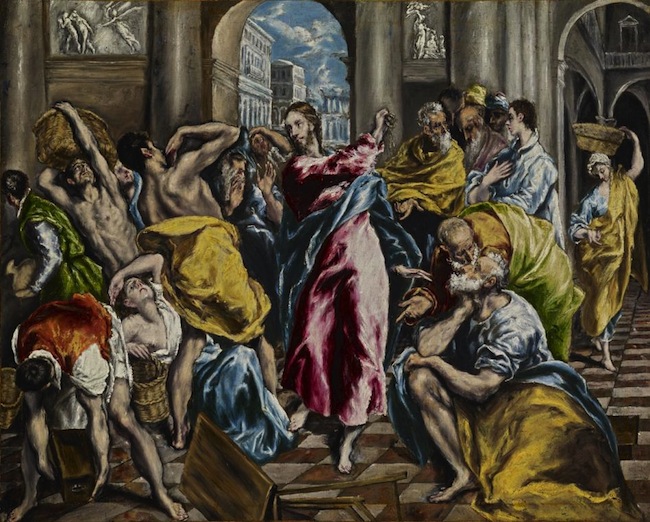
El Greco, Purification of the Temple, ca. 1600. Oil on canvas, 16 1/2 x 20 5/8 in. The Frick Collection; photo Michael Bodycom. Source: frick.org
To mark the 400th anniversary of the death of El Greco (1541-1614), The Frick Collection and The Metropolitan Museum of Art present all of his works available in New York public collections in coordinated exhibitions respectively titled “El Greco at The Frick Collection” and “El Greco in New York.” Together, the exhibitions provide the most comprehensive view of this enigmatic Spanish Renaissance master outside of Madrid.

El Greco, View of Toledo, ca. 1598–99. Oil on canvas, 47 3/4 x 42 3/4 in. The Metropolitan Museum of Art; Credit Line: H. O. Havemeyer Collection, Bequest of Mrs. H. O. Havemeyer, 1929. Source: metmuseum.org
While El Greco’s moniker simply translates to “The Greek,” there was nothing simple about the extraordinary artist who was born in Crete (which was then part of the Republic of Venice), worked for a brief time in Italy, and eventually moved to Toledo, Spain, where he lived and worked until his death. Scholars have long characterized El Greco as an artist so unique as to defy conventional schools of art, although his works were important precursors to both Expressionism and Cubism. The painting some scholars believe to be a self-portrait of the artist is directly below.

El Greco, Portrait of an Old Man, ca. 1595–1600. Oil on canvas, 20 3/4 x 18 3/8 in. Metropolitan Museum of Art; Credit Line: Purchase, Joseph Pulitzer Bequest, 1924. Source: metmuseum.org
While El Greco was highly regarded during his life, his paintings were disdained as oddities in the immediate generations after his death. Interest in his work was renewed in the 18th century, and today, his legacy as one of the most original artists in Western art is firmly entrenched. The Frick Collection’s El Greco paintings were acquired by the museum’s namesake, Henry Clay Frick, in the early 20th century. The Metropolitan Museum of Art’s collection has been pooled with that of The Hispanic Society of America for this exhibition. Both exhibitions end this Sunday, February 1st.





